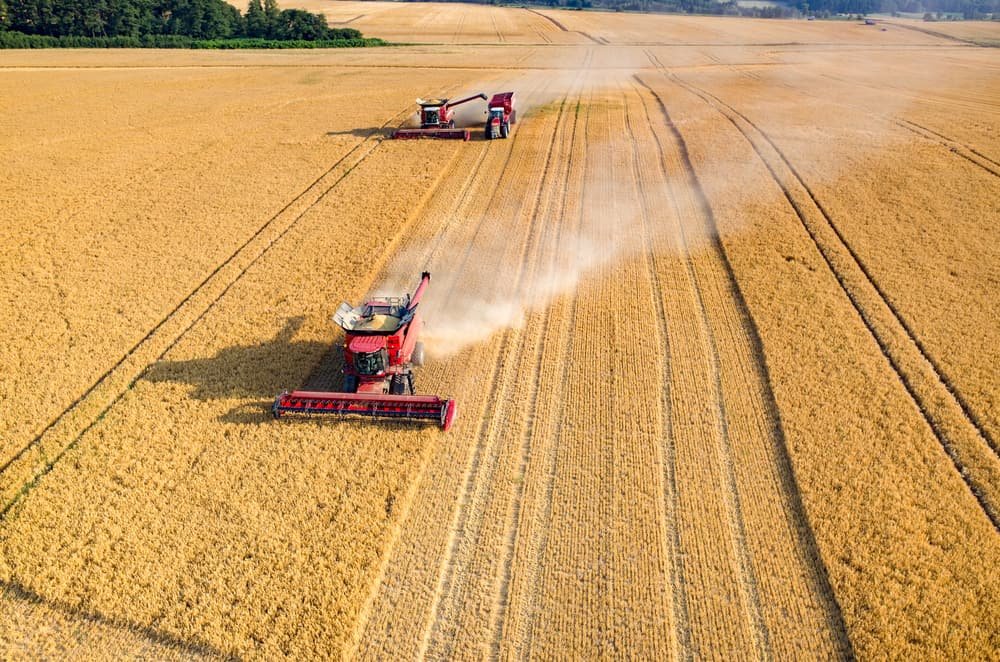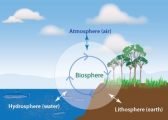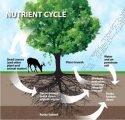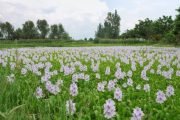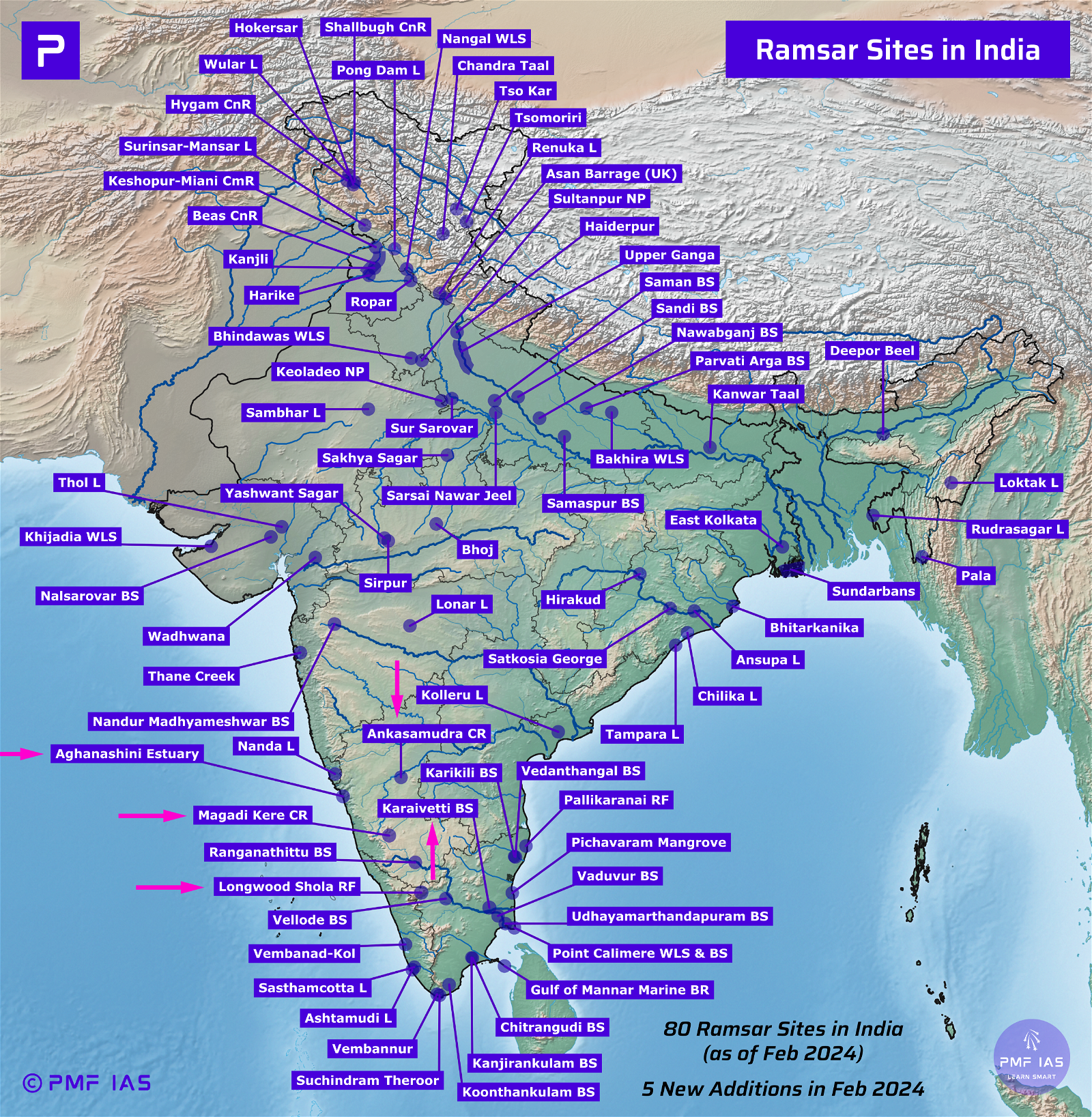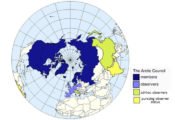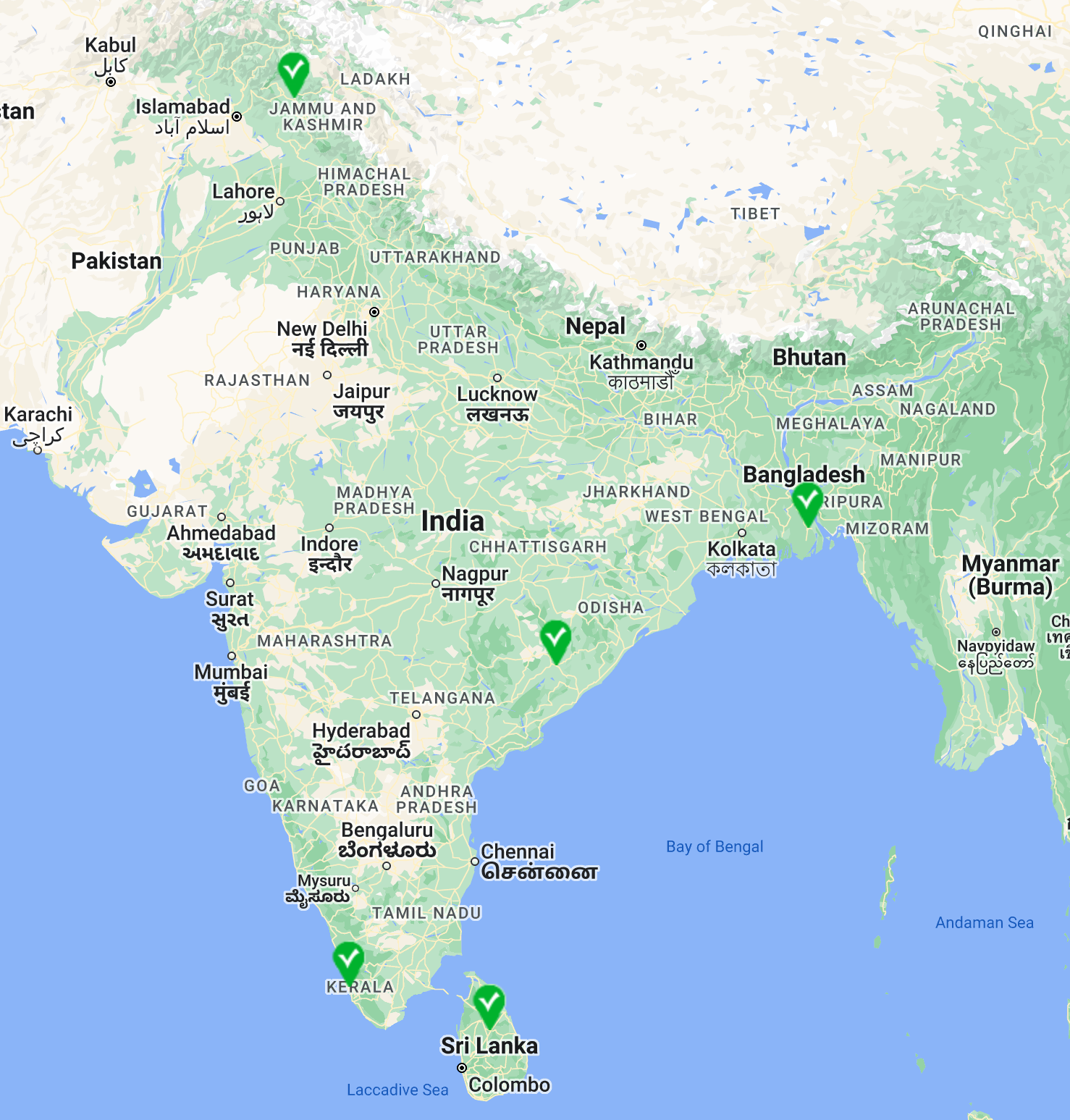
Natural Farming, Zero-Budget Natural Farming (ZBNF)
Subscribe to Never Miss an Important Update! Assured Discounts on New Products!
Must Join PMF IAS Telegram Channel & PMF IAS History Telegram Channel
Last updated on April 19, 2024 9:30 PM
- The Green Revolution led to extensive water consumption and aggravated groundwater loss. According to the Central Water Commission, the agriculture sector has already consumed over 83 percent of the available water resources. Hence there is a demand to shift to sustainable natural farming systems, such as Zero-Budget Natural Farming (ZBNF).
Natural Farming
- Natural Farming is a chemical-free traditional sustainable farming method. It largely avoids the use of manufactured inputs and equipment.
- Masanobu Fukuoka established this ecological farming approach in his 1975 book ‘The One-Straw Revolution’. It was referred to as the Fukuoka Method or do-nothing farming.
Benefits of Natural Farming
- Low cost of production: Minimal use of the equipment and no use of chemical fertilizer and pesticides.
- Good for health: Food produced has higher nutrition density and is chemical-free.
- Environment Conservation: Fewer chemical residues and carbon emissions. In this agroecology-based diversified farming system, crops, trees, and livestock are integrated with functional biodiversity.
- Efficient Use of Water: Modern commercial farming leads to the over-extraction of groundwater. But natural farming leads to more efficient use of soil moisture.
Promotes Soil Health
- Conventional chemical-based farming depletes macro-nutrients (nitrogen, phosphorus, potassium, etc.), micro-nutrients (iron, manganese, zinc, copper, etc.), organic carbon, and rhizosphere microbiome (for nitrogen fixing) in the soil. This does not happen in natural farming.
- Natural farming on the other hand helps in the growth of beneficial organisms like earthworms and increases soil enzymes and microbial biomass. All these help in soil restoration.
Challenges of Natural Farming
- The decline in Yields: Sikkim, the first organic state in India has seen a decline in yield following conversion to organic farming. Many farmers have switched back to conventional farming after this decline.
- Shortage of Natural Inputs: Lack of readily available natural inputs is a barrier to converting to chemical-free agriculture. For profitable farming this delay and shortage in natural inputs are detrimental.
- Resistance from Chemical Inputs Industry: It is a well-built-up capital-intensive industry. It naturally discourages any efforts towards natural farming.
Zero-Budget Natural Farming (ZBNF)
- India introduced ZBNF in its Budget 2019-20. It was first propagated by Subhash Palekar (who was conferred with Padma Shri in 2016) as a movement for farmers who were in debt due to the Green Revolution.
- ZBNF is neither chemical-loaded nor organic. It seeks to reduce input costs to ZERO by avoiding chemical and manufactured inputs and encouraging farmers to rely upon natural products available locally.
- It is considered a ‘zero budget’ because there is not much need to spend money on inputs and the costs of raising the main crop are offset by the income that farmers earn from intercrops.
Components of Zero-Budget Natural Farming (ZBNF)
- ZBNF promotes:
- Soil aeration,
- Minimal watering (saves electricity),
- Intercropping,
- Bunds and topsoil mulching and
- ZBNF discourages intensive irrigation and deep ploughing. It opposes the use of vermicompost. Instead, it recommends the revival of local deep soil earthworms through increased organic matter.
- In ZBNF, chemical fertilizers and pesticides make way for locally available cow dung, cow urine, jaggery, etc., and treating seeds with natural ingredients made on the farm by the farmer himself.
- ZBNF promotes the application of
- Jivamrita/jeevamrutha: it is a fermented microbial culture. It provides nutrients and promotes the activity of microorganisms and earthworms in the soil. It also helps to prevent fungal and bacterial plant diseases.
- Bijamrita: Bijamrita effectively protects young roots from fungus and soil-borne and seed-borne diseases. Jeevamrutha and Bijamrita are prepared from a mixture of desi cow dung & urine, jaggery, etc.
- Acchadana/Mulching: a protective layer of biomass on the soil.
- Whapasa/Moisture: Whapasa is the condition where there are both air molecules and water molecules present in the soil. It involves reducing irrigation, irrigating only at noon, in alternate furrows.
- Also, ZBNF includes three methods of insect and pest management: Agniastra, Brahmastra, and Neemastra (preparations using cow urine, cow dung, tobacco, fruits, green chili, garlic, and neem).
Bharatiya Prakritik Krishi Paddhati (BPKP) Scheme for Natural Farming
- BPKP Scheme is launched by the Ministry of Agriculture & Farmers Welfare in 2020-21.
- It is a sub-scheme of Paramparagat Krishi Vikas Yojana (PKVY).
- It is launched for the promotion of traditional indigenous practices.
- It mainly emphasizes on:
- Exclusion of all synthetic chemical inputs
- On-farm biomass recycling with significant stress on biomass mulching
- Use of cow dung-urine formulations
- Plant-based preparations
- Time to time working of soil for aeration
- Under BPKP, financial assistance of Rs 12200/ha for 3 years is provided for cluster formation, capacity building and continuous handholding by trained personnel, certification, and residue analysis.
Paramparagat Krishi Vikas Yojna (PKVY)
|
Organic Farming vs. Natural Farming (ZBNF)
Similarities
- Both organic and natural farming are sustainable agricultural practices. They focus on producing chemical-free foods by avoiding the application of synthetic fertilizers and chemical pesticides. They encourage farmers to use local breeds of seeds and plants and non-chemical homemade pest methods.
Differences
- Natural farming is described as “the natural way of farming” or “do nothing farming”. Organic Farming on the other hand is a holistic system designed to optimize the productivity of diverse communities (plants, livestock) within the agroecosystem.
- Organic farming doesn’t discourage basic practices like ploughing, tilting, applying bulk organic manures (compost, vermicompost, etc.), weeding, etc. In natural farming, the natural agroecosystem is preserved by avoiding ploughing, tilling of the soil, weeding, application of bulk organic manures, etc.
- Organic farming can be capital-intensive due to the requirement of bulk organic manures, modified agroecosystems, etc. In contrast, natural farming is extremely low-cost (in the case of ZBNF it is almost zero) with locally made preparations.
Sustainable Practises for ZBNF & Agriculture in General
Mixed cropping or Diverse cropping
- In mixed cropping or diverse cropping two or more crops are grown all at the same time in a field. If by chance one crop fails, the other crops cover the risk of total crop failure.
- Usually a long-duration crop is grown with a short-duration one, so both get sufficient nutrition at the time of maturity. Generally, a leguminous crop is grown along with the main crop (intercropping).
- The various plans followed in diverse or mixed cropping practices are:
- polyvarietal cultivation where several genetic varieties of the same crop are planted.
- intercropping is where two or more different crops are grown simultaneously, like carbohydrate-rich cereal that uses soil nitrogen and nitrogen-fixing legume that puts the nitrogen back in the soil.
- polyculture, in which different plants maturing at various times are planted together.
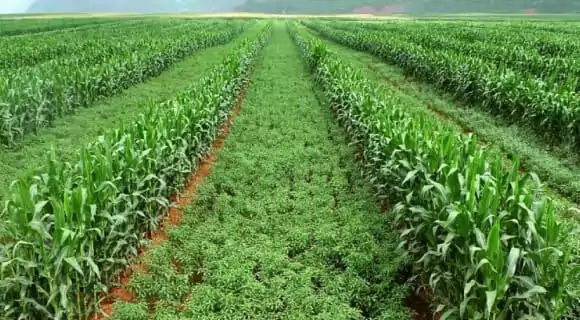
Advantages of Mixed cropping
- This practice has many advantages because the fertilizer and water requirements of plants are different, so there is less need for these inputs.
- Pests are controlled naturally because their natural predators find multiple habitats to survive.
- It has been found that this practice produces a much higher yield per hectare than monoculture.
Monoculture
Strip Farming
|
Crop Rotation (Multiple Cropping or Multi-Cropping)
- It is the practice of growing two or more different crops in regular succession in the same field within a year. This practice controls insects and diseases, increases soil fertility, and decreases soil erosion. This practice can continue for some time, but the land cannot maintain a high yield in the long run.
- Generally, soil cannot sustain continuous cropping (monocropping) with a high-yielding single crop because certain nutrients required by the crop get exhausted totally. In contrast, others remain unutilized leading to a severe nutrient imbalance in soil and encouraging certain diseases and pests.
- Sowing a leguminous crop (e.g., green gram) as a rotational crop is very useful because legumes enhance nitrogen levels in the soil and reduce the need for chemical nitrogen fertilizer.
Best Practises in Crop Rotation
- Leguminous crops should be grown after non-leguminous crops.
- Crops that require less water (irrigation) should be grown after one that requires more water.
- Crops requiring less manure should be sown after one that requires more manure.
Mixed Farming
- Mixed farming involves mixed crops along with livestock operations. It has several advantages:
- Optimum diversity may be obtained by integrating crops and livestock in the same farming operation.
- Growing crops only on more level land and pastures or forages on steeper slopes will reduce soil erosion.
- Pasture and leguminous forage crops in rotation enhance soil quality and reduce erosion; livestock manure, in turn, contributes to soil fertility.
- Livestock can buffer the negative impacts of low rainfall periods by consuming crop residue which in “plant only” systems would have been considered crop failure.
- Feeding and marketing are flexible in animal production systems. This can help cushion farmers against price fluctuations and, make more efficient use of farm labour.
Soil Management
- Healthy soil produces crops less susceptible to pests and diseases. Accordingly, the soil must be protected and nurtured to ensure long-term productivity and stability. Methods of protection include using cover crops, and compost, reducing tillage, and conserving soil moisture with dead mulches.
Vermicomposting (Palekar opposes the use of vermicompost in ZBNF)
- Vermicomposting is an appropriate technique for efficiently recycling animal wastes, crop residues, and agro-industrial wastes with the help of earthworms.
- Vermicompost can be prepared from all sorts of organic residues – animal waste, sericulture residues, dairy and poultry residues, bagasse from sugarcane factories, weeds (particularly Parthenium hysterophorus or Congress weed before flowering), etc.
Nutrient Management
- Sixteen nutrients are essential for plants. Air supplies carbon and oxygen, hydrogen comes from water, and soil supplies thirteen nutrients. Amongst these, six are required in large quantities and are called macronutrients. The other seven are required in small quantities and are therefore called micronutrients.
|
Source |
Nutrient |
|
Air |
Carbon, Oxygen |
|
Water |
Hydrogen, Oxygen |
|
Soil |
|
Nitrogen (N)
- N is an essential constituent of proteins and is present in many other compounds of great physiological importance in plant metabolism. It is an integral part of chlorophyll, the primary observer of light energy needed for photosynthesis. It imparts vigorous vegetative growth and dark green colour to plants.
Phosphorus (P)
- Phosphorus (P) is an essential part of the enzymes which help the crop to fix light energy. It forms an integral part of nucleic acids, the carriers of genetic information, and is important in stimulating root growth.
Potassium (K)
- Potassium (K) is involved in processes that ensure carbon assimilation and transportation throughout the plant for growth and storing sugars and proteins. Furthermore, sufficient potassium ensures resistance to frost, drought, and certain diseases. The potassium ion is essential for water regulation and uptake (osmosis).
Others
- Magnesium occurs in chlorophyll and is also an activator of enzymes.
- Sulphur forms part of two essential amino acids which are among the many building blocks of protein. It is also found in vitamin B1 and several necessary enzymes.
- Calcium is required for plant growth, cell division, and enlargement. The growth of root and shoot tips and storage organs is also affected by calcium as it is a component of cell membranes. Calcium is also vital for pollen growth and preventing leaf fall.
Last updated on April 19, 2024 9:30 PM






